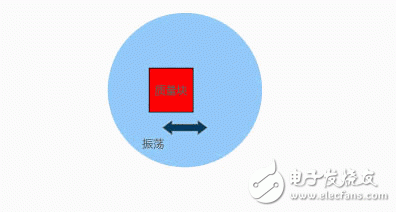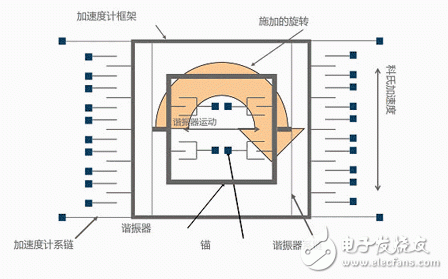Recently, I had the chance to listen to some really insightful lectures on gyroscopes from Daniel’s team of sensor experts. They explained the basics and applications in a way that made it easier for me to understand. Afterward, I took some time to organize what I learned and thought I’d share it with anyone who's curious about this technology. A gyroscope is a device used to measure angular velocity. It works by detecting the Coriolis effect, which is similar to how an accelerometer functions but with a different setup. The basic principle of a gyroscope involves applying voltage to fixed fingers, causing a mass to oscillate back and forth. When the device rotates, the Coriolis acceleration comes into play, and this can be measured. This process is somewhat like how accelerometers work, using similar decoding methods and amplifiers to extract useful data. Angular rate is determined by measuring the Coriolis acceleration. The formula is: Coriolis acceleration = 2 × (ω × v), where ω is the angular velocity (ω = 2πf). The gyroscope uses a 14 kHz resonant structure to couple motion to the accelerometer frame. This allows it to detect rotational movement accurately while filtering out low-frequency vibrations. The mechanical design is quite similar to that of accelerometers, often using micromachined polysilicon structures. Signal conditioning also shares techniques with accelerometers, such as voltage offset conversion. When a varying voltage is applied, the device moves horizontally. However, if a rotation is introduced, the device will start moving vertically. This vertical movement is detected by the external fingers, allowing the system to pick up the rotation signal. The animation above is a simplified representation of how a gyroscope works. The actual internal structure is more complex, so don’t get confused by the visual—it’s just for illustration! PS: Gyroscopes can be designed for three axes—roll, pitch, and yaw. If you’ve ever flown a plane or watched a drone in action, you’ll know that these terms are essential for control. Pitch refers to the up and down movement, yaw is left and right, and roll is the tilting motion. These parameters are crucial for controlling aircraft, missiles, and even cars. In fact, when GPS signals are lost, like when driving through a tunnel, gyroscopes help keep track of your position and orientation.
Vertical Light Tower
A vertical light tower is a tall structure that is designed to provide high-intensity lighting for various purposes. It typically consists of a vertical pole or mast with multiple light fixtures mounted at different heights. The tower is usually made of durable materials such as steel or aluminum to withstand harsh weather conditions.
Vertical Light Tower,Stadium Light Towers,Led Light Towers,Emergency Light Towers Grandwatt Electric Corp. , https://www.grandwattelectric.com





Vertical light towers are commonly used in construction sites, outdoor events, sports fields, and emergency situations where temporary lighting is required. They provide bright and uniform illumination over a large area, making them ideal for nighttime operations or areas with limited natural light.
These towers are often portable and can be easily transported and set up at different locations. They may have adjustable heights and angles to direct the light where it is needed most. Some models also come with additional features such as telescopic masts, generators, and remote control systems for convenient operation.
Vertical light towers can be powered by various sources such as electricity, diesel, or solar energy. They are designed to be energy-efficient, minimizing power consumption while providing maximum brightness. Some models also incorporate advanced technologies such as LED lights, which offer longer lifespan and lower maintenance requirements compared to traditional lighting options.
Overall, vertical light towers are essential tools for illuminating large areas and ensuring safety and productivity in various industries and applications.